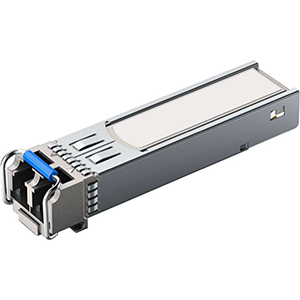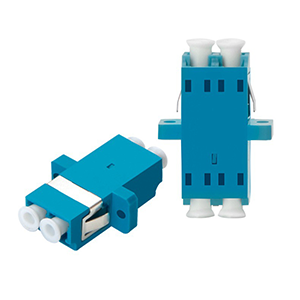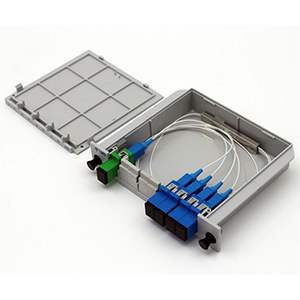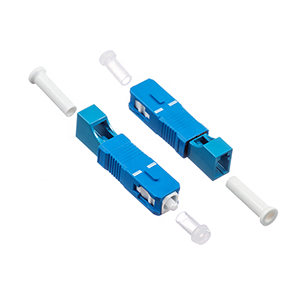Optical modules undoubtedly play a key role in optical fiber communications. This article will focus on analyzing the wavelength characteristics of the J9150D optical module. We will first describe the physical structure and technical parameters of the J9150D optical module and explain its application in network equipment. Next, we will define the concept of optical module wavelength and its importance, and explain the specific operating wavelength range of the J9150D optical module.
Subsequently, we will discuss the impact of light sources, optical fibers, etc. on wavelength, and analyze the influencing mechanism of wavelength stability of the J9150D optical module. In addition, we will introduce commonly used instruments and equipment for measuring the wavelength of J9150D optical modules and demonstrate specific test steps. Finally, we will analyze the wavelength selection strategies of J9150D in different scenarios based on the actual needs of optical fiber communication systems.

J9150D optical module overview
Let me introduce you to the basic information of the J9150D optical module:
Physical structure and technical parameters of J9150D optical module:
Physical structure:
- J9150D is a small pluggable optical module (SFP+ specification).
- Dimensions are 13.4 x 8.5 x 56.5mm, small and compact.
- Adopts LC optical fiber connector to support duplex/simplex optical fiber transmission.
Technical parameters:
- Supports 10Gbps Ethernet transmission rate.
- The wavelength is 1310nm, suitable for single-mode fiber transmission.
- The optical transmit power is greater than -8.2dBm, and the receiving sensitivity is less than -12.6dBm.
- The operating temperature range is 0~70°C, and the humidity is 5%~95%.
- Comply with SFP+MSA (Multi-Source Agreement) standard.
Application of J9150D optical module in network equipment:
Gigabit Ethernet switch:
- J9150D can be used in the SFP+ optical port of 10GbE switches to provide fiber uplink.
- Supports long-distance single-mode optical fiber transmission, suitable for campus, enterprise and other scenarios.
Router/Firewall:
- J9150D can be plugged into the SFP+ interface of routers, firewalls and other devices.
- Provide high-speed 10GbE optical ports for core layer/aggregation layer network links.
Server/Storage:
- J9150D optical module can be used in SFP+ ports of servers, storage devices, etc.
- Provide high-speed fiber optic connections to these devices to meet data center needs.
In short, J9150D is a universal 10GbE SFP+ optical module. With its reliable technical parameters and wide compatibility, it is widely used in high-speed optical fiber connections of various network equipment.
Operating wavelength of J9150D optical module
Let me introduce to you the concept and importance of the working wavelength of the optical module, and explain the specific working wavelength range of the J9150D optical module.
The concept and importance of optical module working wavelength:
The concept of wavelength:
- The operating wavelength of the optical module refers to the wavelength of the optical signal when it propagates in space.
- The operating wavelength of the optical module is usually expressed in nanometers (nm).
Importance of wavelength:
- The loss and dispersion characteristics of optical fiber vary with wavelength.
- Selecting the appropriate working wavelength can optimize fiber transmission performance and improve reliability.
- Different application scenarios often have specific wavelength requirements and require matching optical modules.
Specific operating wavelength range of J9150D optical module:
- According to the previous introduction, the working wavelength of the J9150D optical module is 1310nm.
- The 1310nm wavelength belongs to the near-infrared light band and is a wavelength commonly used for single-mode fiber transmission.
- This wavelength has lower fiber loss and is suitable for long-distance, high-speed transmission.
- The 1310nm wavelength of the J9150D optical module matches the transmission characteristics of standard single-mode optical fiber and can provide reliable 10Gbps Ethernet transmission.
In short, the operating wavelength of the optical module is an important technical parameter, which directly affects the transmission performance of the optical fiber. The J9150D optical module uses 1310nm wavelength, which is one of the best wavelengths for single-mode fiber transmission and can meet the needs of high-speed Ethernet applications.
Analysis of factors affecting the wavelength characteristics of J9150D
Let me analyze for you the key factors that affect the wavelength characteristics of the J9150D optical module:
The effect of light source on wavelength:
Light source type:
- The light source used by the J9150D optical module is a laser diode.
- Different types of light sources emit light signals with different center wavelengths.
Temperature change:
- The operating temperature of a laser diode affects its output light wavelength.
- An increase in temperature will cause the wavelength to shift red, and a decrease in temperature will cause the wavelength to shift blue.
The effect of optical fiber on wavelength:
Fiber dispersion:
- Light of different wavelengths will produce different dispersion effects when propagating in optical fibers.
- This will broaden the light pulse and affect the stability of the wavelength.
Microbending loss:
- Microbends in optical fibers can increase transmission loss at certain wavelengths.
- This results in changes in the power and spectrum of light waves.
The influencing mechanism of wavelength stability of J9150D optical module:
Temperature compensation design:
- J9150D integrates a temperature compensation circuit to suppress wavelength drift caused by temperature changes.
- Ensures high wavelength stability over a wide temperature operating range.
Fiber matching design:
- The optical transmission module of J9150D has been optimized to match standard single-mode optical fiber to the greatest extent.
- Reduces wavelength distortion and power attenuation due to fiber characteristics.
Optical isolation design:
- J9150D uses optical isolation devices internally to block the interference of retroreflected light.
- This helps maintain the wavelength stability and transmission power of the light source.
In short, light source characteristics and optical fiber transmission characteristics are key factors affecting the wavelength stability of J9150D. Through careful temperature compensation, fiber matching and optical isolation design, the J9150D optical module can maintain excellent wavelength stability in a wide temperature environment.
Wavelength testing and verification methods
Let me introduce to you the commonly used instruments and equipment for measuring the wavelength of J9150D optical module, and demonstrate the specific test steps.
Common instruments and equipment for measuring the wavelength of J9150D optical module:
Optical Spectrum Analyzer (OSA):
- OSA is the professional-grade testing instrument most commonly used to measure the wavelength of optical modules.
- It can accurately measure the central wavelength, bandwidth, power and other parameters of light waves.
Optical Power Meter/Optical Power Meter:
- Although the optical power meter cannot measure the wavelength, it can measure the output power of the optical module.
- Combined with the understanding of wavelength, the wavelength characteristics of the optical module can also be indirectly determined.
Wavemeter:
- A wavelength meter is a compact instrument designed to measure the wavelength of light.
- The measurement accuracy and resolution are usually higher than those of optical power meters.
Specific steps for wavelength testing of J9150D optical module:
Prepare test equipment:
- Get the OSA, optical power meter and other instruments ready and calibrate the measurement accuracy.
- Ensure that the temperature and humidity of the test environment are stable and avoid interference from external factors.
Connecting J9150D optical module:
- Connect the optical fiber interface of the J9150D optical module to the OSA test interface.
- Make sure the optical fiber connection is good and not damaged or contaminated.
Wavelength measurement:
- Start OSA and select the appropriate scanning wavelength range.
- Observe the spectrum displayed by the OSA and find the center wavelength of the J9150D optical module.
- Record the measured center wavelength value.
Power measurement:
- Reconnect the J9150D optical module to the optical power meter test interface.
- Measure and record the output optical power value of the J9150D optical module.
Result analysis:
- Compare the wavelength and power test results with the technical specifications of J9150D.
- Confirm that it meets the specifications provided by the manufacturer.
In summary, using professional testing instruments such as OSA and optical power meters and following standard testing procedures, key parameters such as the central wavelength and output power of the J9150D optical module can be accurately measured.
Wavelength selection of J9150D in different applications
Let me combine the actual needs of optical fiber communication systems and analyze the wavelength selection strategies of J9150D optical modules in different application scenarios.
Wavelength requirements for optical fiber communication systems:
Single-mode optical fiber transmission:
- The most commonly used transmission wavelengths of single-mode fiber are 1310nm and 1550nm.
- These two wavelength bands have lower fiber loss and dispersion.
Wavelength division multiplexing technology:
- Wavelength-division multiplexing (WDM) technology can multiplex multiple signals of different wavelengths on a single optical fiber.
- This requires that the light sources of each channel have different and stable center wavelengths.
Application scenario requirements:
- Different application environments may have specific requirements for light wavelengths.
- Such as metro networks, long-distance trunk networks, etc. usually require a wavelength of 1550nm.
Wavelength selection strategies for J9150D in different scenarios:
Single-mode optical fiber transmission scenario:
- J9150D uses 1310nm wavelength, which matches the optimal transmission wavelength of single-mode fiber.
- This provides low-loss, low-dispersion, high-speed 10GbE fiber transmission performance.
WDM system application:
- The 1310nm wavelength of J9150D can be multiplexed with other wavelength channels such as 1550nm.
- Coupled with DWDM/CWDM technology to expand the transmission capacity of optical fiber.
metro/trunk network application:
- If the application scenario requires a wavelength of 1550nm, J9150D may not be able to directly meet the requirement.
- At this time, you need to use the 1550nm version of the SFP+ optical module or use wavelength conversion equipment.
In short, the J9150D optical module uses 1310nm single-mode wavelength, which is very suitable for standard single-mode fiber transmission applications. However, in some special WDM or metro network scenarios, it may be necessary to select an appropriate wavelength version optical module according to actual needs, or to adapt using wavelength conversion technology.
Summary
Accurately controlling the wavelength characteristics of optical modules is crucial to ensuring the reliable operation of optical fiber communication systems. Our company has long been committed to the R&D and production of optical modules and supporting products, and has rich industry experience. Our J9150D optical module has reached the industry-leading level in terms of optical parameters and stability, and can meet your demanding network application needs.
Whether you are deploying it in a backbone network or an access network, we can provide you with customized J9150D optical module solutions. At the same time, our professional team will provide you with a full range of technical support, including on-site surveys, performance testing, daily maintenanceNursing services. Contact us now to learn more details about the wavelength characteristics of J9150D optical module.
J9150D optical module wavelength FAQ
An optical module is a self-contained component that contains optical transmitter and/or receiver circuitry for use in fiber optic communication systems.
Optical modules are often classified by their form factor (e.g., SFP, QSFP), data rate support, and intended application (e.g., Ethernet, Fibre Channel, SONET/SDH).
The most common wavelengths for optical modules are 850nm, 1310nm, and 1550nm, which correspond to low-loss transmission windows in optical fiber.
The wavelength information is typically provided in the module’s technical specifications or datasheet from the manufacturer.
The wavelength must match the fiber optic network’s requirements and be compatible with the other optical components, such as transceivers and amplifiers.
Shorter wavelengths (e.g., 850nm) offer lower cost but have higher fiber attenuation, while longer wavelengths (e.g., 1550nm) have lower attenuation but are generally more expensive.
Carefully consult the manufacturer’s specifications and ensure the module’s wavelength, data rate, and other parameters match your network requirements.
It is generally not recommended to use an optical module with an incompatible wavelength, as it can result in poor performance or even damage to the network components.
Ongoing advancements include the integration of higher data rates, extended wavelength support, and the adoption of new form factors to enable higher-density fiber optic networks.
Proper handling, cleaning, and storage practices are important to ensure the long-term reliability and performance of optical modules.





